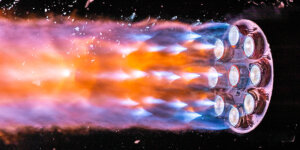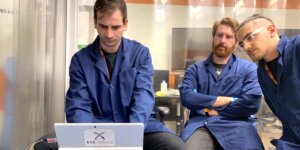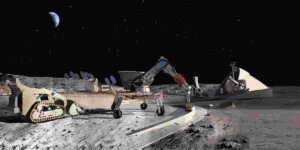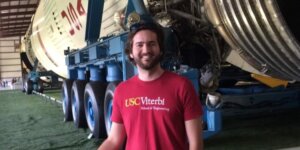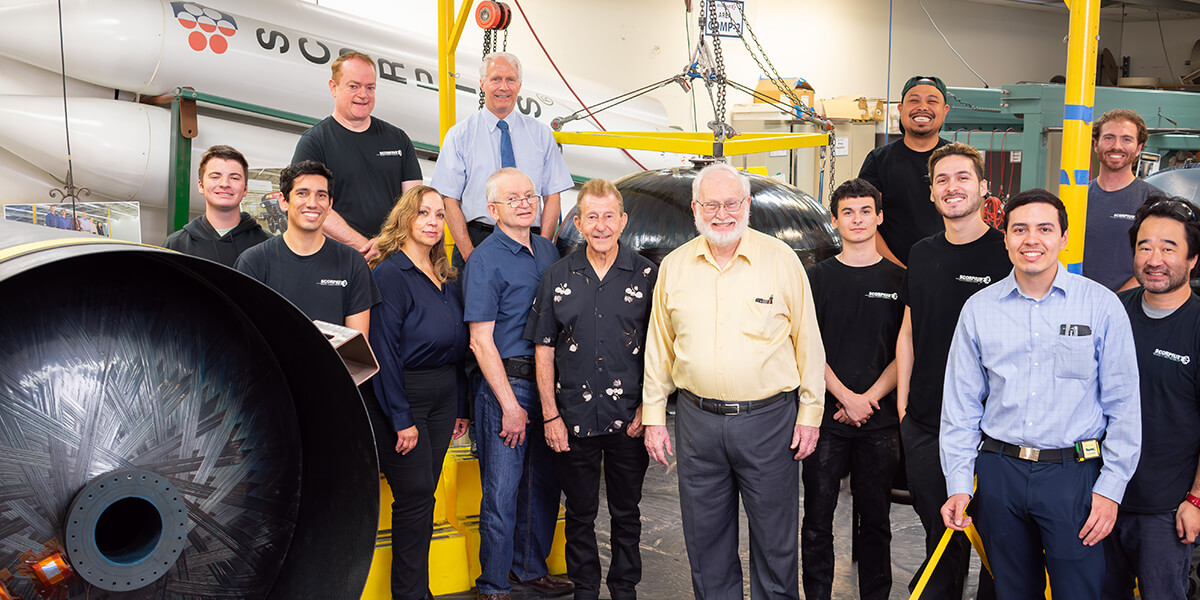
Adjunct Professor of Astronautical Engineering James Wertz, with the team at Microcosm Inc. and Scorpius Space Launch Company that developed the lightweight all-composite tanks
For decades, James Wertz has been preoccupied by a central question that has guided his work as an educator and an industry innovator. In addition to his role as an adjunct professor at the USC Department of Astronautical Engineering, Wertz is president of Microcosm Inc., a world leader in engineering solutions to reduce space mission and launch costs.
His question? If the technology to land on the moon was developed over 50 years ago, why isn’t there a lunar settlement yet?
Of course, there are many opposing answers to this question. For every aspiring space tourist, there’s another person who would prefer to cultivate a plot of land on Earth. That said, Wertz’s question does pinpoint an insight with relevance for the space industry as a whole.
“As I see it, we’re being held up by the issue of money and motivation,” he said. “The cost of programs to design new equipment – from space telescopes, to space suits – typically reaches into the billions. Naturally, when programs cost that much, the United States government is going to direct its attention elsewhere. Until we can build cheaper, space just isn’t going to be a priority.”
Reinventing Space
Wertz’s answer is the “New Space” or “Reinventing Space” movement: an initiative to solve the combined problem of reducing cost and schedule dramatically, while achieving high performance, greater resiliency and lower risk.
Microcosm puts the New Space movement into practice, and the company’s latest major innovation is the development of lightweight all-composite tanks for NASA’s first commercial payload to the Moon. The tanks were produced in collaboration with Scorpius Space Launch Company, based in Torrance, CA. The launch is due to take place in the summer of 2023: a Nova-C Lunar Lander will be launched via SpaceX Falcon 9 Rocket, carrying 5 NASA payloads and commercial cargo.
Typically, strong overlapping composite parts include metal components that are subject to thermal expansion and contraction – problematic, when moving from Earth’s atmosphere to the cryogenic temperatures of space payloads. The key innovation of the lightweight tanks developed by Microcosm and Scorpius is the fact that they have no metal linings or other metal parts, significantly reducing weight and therefore allowing for more payload – vital to the economics and viability of space missions.
“We first started working on this project in 2001,” said Wertz. “An ordinary composite metal tank would leak at very cold temperatures, but we’ve solved this problem and reduced costs in the process. Think about what could be achieved if we applied this can-do mindset to the space industry at large.”
Innovation and Education
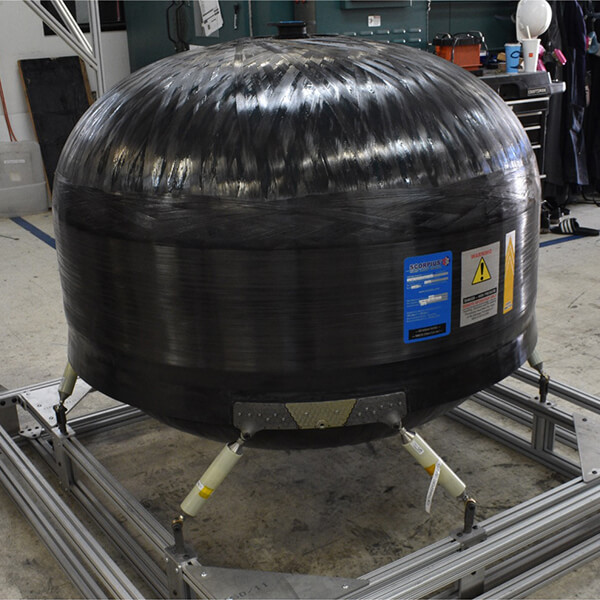
All-composite tank developed by Microcosm Inc and Scorpius Space Launch Company
It goes without saying that Wertz is an optimist – with good reason. His role as an innovator is aligned with his calling as an educator, and he is globally recognized as the instructor who has developed, collected and codified much of the core space mission engineering knowledge in use today.
Wertz holds multiple patents in orbit and attitude systems, and his textbook Space Mission Analysis and Design is one of the most widely used astronautics reference texts in print. He has taught his course “Reducing Space Mission Cost” for 20 years at USC, and has provided professional training for multiple corporations and governmental organizations in addition to major research institutions in the United States, Canada, and Europe.
“In his classes, Professor Wertz has been bringing a very important perspective
to the challenges that have faced government space programs and industry for decades,” said Mike Gruntman, professor of Astronautical Engineerng. “This understanding of cost drivers helps our students to contribute in a consequential way to advancing technology in new space as well as legacy space and defense companies.”
Entering a New Era
As an academic and an entrepreneur, Wertz is also a student of human nature – he’s deeply curious about what motivates us to achieve the seemingly impossible.
That instinct inspired him to introduce a new class project in 2023 as part of “Design of Low Cost Space Missions,” exploring the options for a commercial, near-term lunar settlement. Designed to spark curiosity about future scenarios, the project imagined the possibility of news anchors reporting from the lunar surface, and a lunar university of graduate students conducting experiments.
If this all sounds too good to be true, consider what’s happening in Torrance, just a short drive from USC. The innovations taking place at Microcosm and Scorpius are rapidly facilitating the new era of commercial space flight.
And the secret to achieving the impossible? As Wertz sees it, desire.
“Sure, we can design optimal machinery and systems. But what does it really take to invent things? Skill is nothing without energy and desire. That’s what I promote in my teaching, and that’s what gives USC students the edge.”
Published on July 20th, 2023
Last updated on July 24th, 2023




